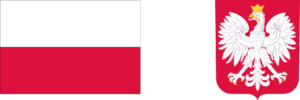River transport has long been an important yet often underestimated element of the logistics network in Central Europe. In a region shaped by rivers like the Danube, Odra, Elbe, and Vistula, inland waterways offer a low-emission, cost-effective, and strategically valuable alternative to road and rail freight. As the European Union intensifies its climate efforts and promotes sustainable mobility, these river routes are gaining renewed attention. Their role in regional trade, economic integration, and ecological transition is becoming increasingly vital—though not without challenges.
Among Central European rivers, the Danube stands out as the most significant. Flowing through or along the borders of ten countries, it serves as a natural corridor linking Western, Central, and Eastern Europe with the Black Sea. The Danube is part of the EU’s Rhine-Danube Corridor within the broader Trans-European Transport Network (TEN-T), which aims to improve cross-border infrastructure and logistics. Alongside the Danube, rivers such as the Odra in Poland and the Elbe in the Czech Republic also offer potential for inland shipping. However, these are often underutilized due to outdated infrastructure and seasonal navigability issues. Despite the environmental and logistical advantages of river transport, only about 6% of EU freight is currently moved this way—a number that highlights the vast untapped potential of the sector in Central Europe.
Key to the development of inland shipping are transport hubs—river ports that serve as both transfer points and economic centers. Cities like Vienna and Bratislava have invested in modern port facilities that connect waterways with rail and road networks. The Port of Vienna, for instance, functions as a fully intermodal hub with container terminals and bulk cargo handling facilities. Bratislava’s port also plays a crucial role in regional logistics, particularly in cooperation with Austria and Hungary. In Hungary, Dunaújváros has emerged as an important industrial river port on the Danube, while in Poland, the ports of Szczecin and Koźle are seen as central to efforts to revive the Odra as a viable transport corridor. Further south, the Port of Ruse in Bulgaria operates as a strategic hub on the lower Danube, serving as a gateway to Eastern markets. These ports not only facilitate the movement of goods but also support regional economies and intermodal logistics chains that stretch across the continent.
Despite its advantages, inland waterway transport faces several major challenges. Many river ports in Central Europe lack modern equipment or sufficient links to road and rail systems. Navigability remains inconsistent, especially during droughts in summer or icy periods in winter. For example, low water levels in the Danube, particularly between Austria and Hungary, often force ships to reduce their cargo loads or cease operations entirely. Environmental regulations, including those protecting Natura 2000 sites, limit riverbed modifications and dredging that could improve navigation depth. Furthermore, climate change is making weather patterns less predictable, increasing the frequency of both floods and droughts. In countries like Poland and the Czech Republic, years of neglect and underfunding have further weakened the potential of river transport. Bureaucratic fragmentation between waterway authorities in different countries only adds to these difficulties.
Recognizing these problems, the European Union has introduced several policies to support the modernization of inland waterway transport. Programs such as NAIADES and PLATINA promote innovation, efficiency, and safety in river logistics. The EU Strategy for the Danube Region encourages collaboration among countries along the Danube to improve navigation, protect the environment, and stimulate economic growth. The TEN-T initiative provides funding for cross-border corridors, including improvements to infrastructure along the Rhine-Danube route. In Poland, the government has introduced the „Odra 2030” strategy, which includes projects to restore the river’s navigability, upgrade port infrastructure, and improve flood protection.
Looking ahead, river transport is expected to play a growing role in building a sustainable, low-emission logistics system for Central Europe. Barges offer a greener alternative to trucks, emitting fewer greenhouse gases and causing less congestion and noise. Many European cities are exploring the development of „green ports” that rely on renewable energy and digital logistics tools. The increasing importance of e-commerce and the trend toward reshoring manufacturing back to Europe also support the demand for regional, flexible, and environmentally friendly transport solutions. River ports located near industrial zones, free trade areas, or intermodal terminals are likely to benefit the most from these developments.
Nevertheless, to unlock the full potential of inland waterways, coordinated policy, stable investment, and long-term political commitment are needed. River transport must be treated not as a legacy of the past, but as a forward-looking solution to many of the logistics and environmental challenges of today. With smart planning and international cooperation, Central Europe’s rivers could become true arteries of sustainable economic growth.
In conclusion, river transport in Central Europe holds significant promise for the future. The Danube, Odra, and other rivers offer efficient and ecological routes that connect countries, regions, and markets. While challenges remain—ranging from infrastructure and climate risks to political fragmentation—these can be addressed through targeted investment, EU support, and strategic thinking. As Europe seeks to modernize its logistics while lowering emissions, inland waterways may prove to be one of its most underused yet most valuable resources.






